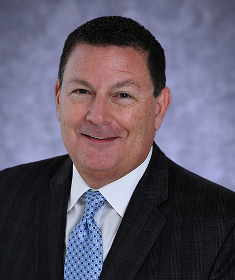RFPs… So You’re Telling Me There’s a Chance!
(2014年9月26日)
Lloyd Christmas: “What do you think the chances are [of us] ending up together?”
Mary Swanson: “Not good.”
Lloyd: “You mean not good like one out of a hundred?”
Mary: “I’d say more like one out of a million.”
Lloyd: “So you’re telling me there’s a chance. Yeah!”
Sound familiar? You probably recognize these classic lines from the movie Dumb and Dumber, starring Jim Carrey as Lloyd Christmas, the eternal optimist. I’m not saying all requests for proposals (RFPs) are like this, but it sure does feel like it sometimes. Let me go over a few of my beliefs about RFPs:
- Issuing an RFP does not mean the customer is ready to buy. In fact, many RFPs are simply initial market research to see what else is out there and what can be learned from responses. Then, after gathering and digesting the information, a second RFP will be released that addresses the customer’s need.
- RFPs are the customer’s attempt to take control of the buying process. There is nothing wrong with that, but it’s something to keep in mind.
- RFPs are often influenced by or even written by the competitor. You just happen to be lucky enough to be a comparison bid!
I know plenty of people who simply don’t respond to RFPs and still have success. So why do people feel the need to respond to RFPs? I frequently hear, “So and so won a huge deal from an RFP,” but often find these examples are victories that were one, two, or even three years back.
So you’re telling me there’s a chance!
I suspect one of the reasons many salespeople and companies respond to RFPs is the confusion between activity and outcome. The activity involved with responding to the RFP keeps everyone busy. The “chance” of a win keeps everyone focused and energized.
We might be surprised if we actually did the math.
Over the last year…
- How many RFPs did you respond to, and how many of your responses made the first cut? (Keep in mind that if you make the first cut, you will now spend even more hours responding.)
- Did you offer a discount in your RFP response?
- How many of your proposals won? What is your win rate on RFPs?
- How much time and money have you spent responding? Is it justified?
I gathered the following research after looking at one company’s RFP responses over a two-year period:
| RFP Responses | First Cut | Won/% | Average Discount | Average Time/Response |
|---|---|---|---|---|
| 42 | 19 | 2/4% | 10% | 200 hours |
These two wins, however, were only worth a total of $800,000 USD. The 8,400 hours (200 hours x 42 responses) spent to win $800K resulted in a combined hourly rate of $48 to prepare the entire proposal. I guarantee the staff who worked on the proposal cost the company more than $48 per hour between salary and overhead, and that doesn’t even account for the cost of goods in actually delivering on the $800K worth of projects. As a result of this research, the company realized responding to RFPs was costing them money. What business can really afford to do that?
How they treated RFPs going forward:
Going forward, this company took a disciplined approach to pursuing RFPs, further defining the criteria that must be met prior to moving forward with an RFP response. With each RFP, they also determined if they could talk to the company soliciting the RFP to truly discover the business need they were trying to resolve. If the RFP process did not allow access to the decision makers and restricted overall contact, the RFP was a clear no-go.
Consider the following when you are faced with making a go/no-go decision on an RFP:
| Consider a go decision if… | Consider a no-go decision if… |
|
|
After all, we cannot have our salespeople running around like Lloyd Christmas… yeah!








 请填写下方的表格,免费订阅我们最新的研究和文章。
请填写下方的表格,免费订阅我们最新的研究和文章。






